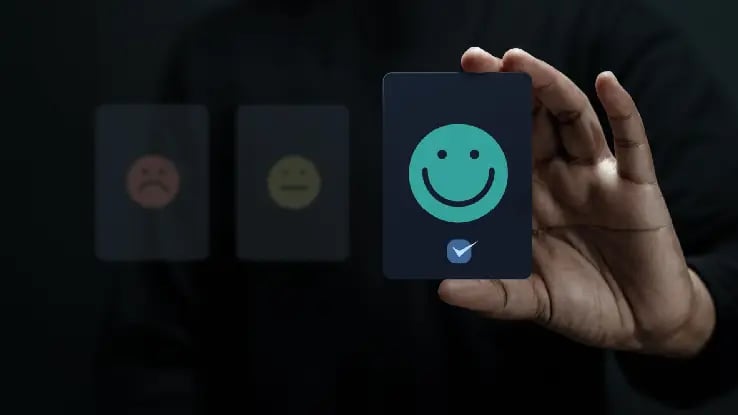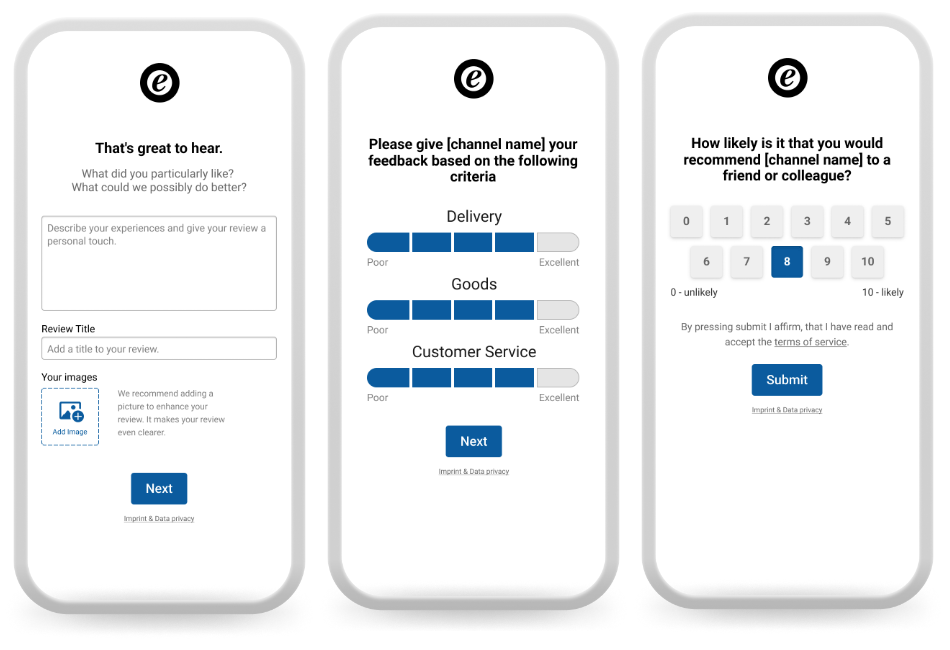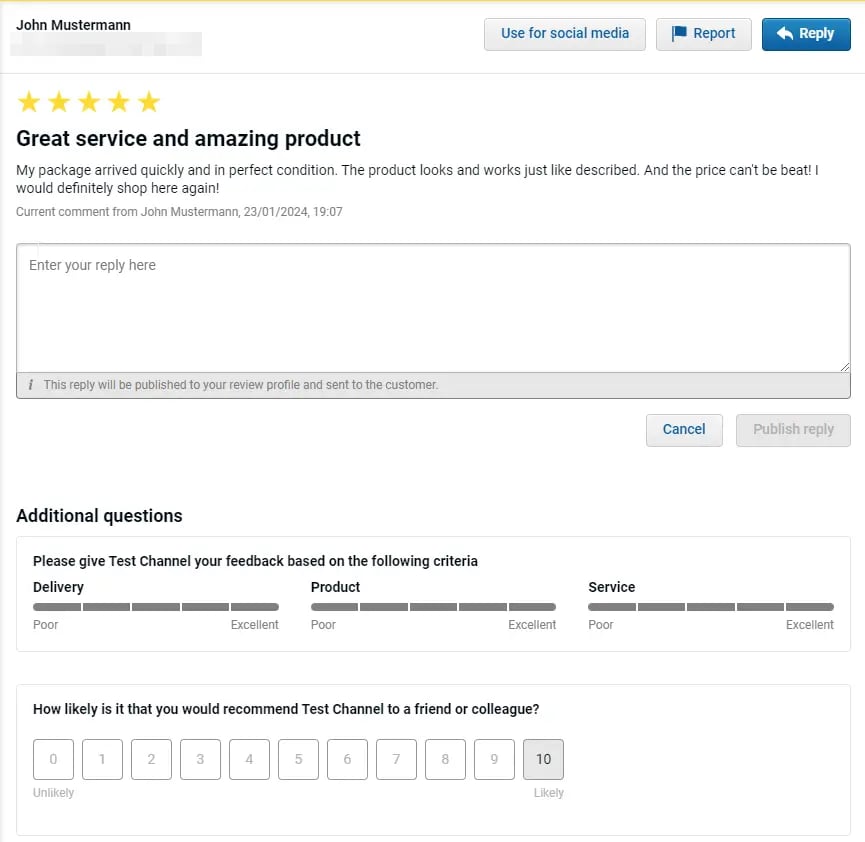SEO Tips for E-commerce: Improve Your Online Shop's Ranking in Google
SEO is an important tool for e-commerce businesses to bring in new customers. Here are the best tips for your online shop to rank higher in Google.

What is a Net Promotor Score (NPS)? You’ve most probably already come across the term a couple of times before, but what do the three letters stand for anyway? And what is the meaning behind it? How do you calculate an NPS? Keep reading to find out the answers to all these questions and learn how you can improve your customer service with a good NPS score!
In this article we’ll cover the following topics:
NPS stands for Net Promoter Score.
It’s a method to measure the extent to which your customers recommend your company based on the (customer) service your online business provides.
The higher your score, the more a customer is inclined to recommend your company to a friend or colleague. This score only slightly differs from the star-ratings system that you are probably accustomed to. In the NPS system, the customer gives a score between 0 and 10. However, your final NPS score will range from -100 to 100.
Recommended Reading:
How to Handle Negative Online Reviews
In essence, NPS is used by any companies to evaluate their own business. Lower scores will often lead many businesses to restructure their processes and policies.

Shutterstock/Black Salmon
As was just mentioned, an NPS score ranges from -100 to 100.
It’s calculated on the basis of so-called promoters, passives and detractors.
The calculation to figure out your Net Promoter Score is less complicated than it first seems. You just subtract the percentage of detractors from the percentage of promoters:
Promoters % - Detractors % = NPS
Let’s look at an example:
Let’s assume you've got 10 people filling out your survey. Out of these people, 6 give you a 9 or a 10 ranking, 3 will give you a 7 or an 8, and 1 person will rate your shop with a grade lower than a 7.
Thus, you’ve got:
The 6 promoters represent 60% of your customers, whereas the one detractor makes up 10% of all ratings.
Therefore, your Net Promoter Score is 50. The corresponding calculation is:
60 - 10 = 50
You can send the assessment form to your customers at any point after they've used your service.
You can do so, for example, soon after your customer receives their item. Also, there is the opportunity to do it after a customer gets in touch with you or your customer service, so that they can evaluate your customer service right afterwards.
To summarise, an NPS can be used in two different ways:
Remember, making mistakes is not a crime. What matters more to your customers is how you solve things after something has gone wrong!
If you’re sending the survey after the client has made contact with you, it’s essential to decide at which exact point you send it.
For example, if you send the survey right after the contact, it’s possible that the client still hasn’t received a solution to their problem (e.g. because they’re still waiting to receive a replacement product).
Then the customer is more likely to evaluate your business with a lower grade than if the problem had already been solved.

Shutterstock/Black Salmon
Remember: With an NPS you’re basically asking a customer: "To what extent would you recommend my company’s service to a friend?".
So, in order for your Net Promoter Score to be accurate, you’ll need to gather many responses to that question. Having a low response rate can have a big impact on your score, especially if some of the responses are “I never recommend companies.”
Since the NPS survey is a basic question scaled from 0-10, ideally, you can get extended feedback from your customers to improve your services.
With Trusted Shops, you can combine your NPS survey with your customer review requests along with other customisable questions. You can even set them up to be sent out at the perfect time automatically.

As a Trusted Shops member shop, you can find all your customer responses summarised in your Review Inbox. There, you’ll get an overview of each customer’s response. In the example below, you can see all three feedback formats were answered:

Want to learn more about the Trusted Shops NPS feature? Check out our Help Centre article.
The detractors are an important group of clients. They’re the ones that were the least satisfied with your service, which is why you should keep an eye on them.
Knowing what your biggest critics think is going to be incredibly valuable. Getting insights can help you improve your offering, re-evaluate the structure and resources of your customer service team, and most importantly, strengthen the overall customer experience.
Passives have a surprisingly large influence on your score and sometimes this is the group of clients you can learn from the most.
Why did someone give you a 7 or an 8 instead of a 9 or a 10?
Passives can teach you how you can improve your service down to the smallest detail by figuring out the difference between an okay experience and a great one.
Promoters are already super satisfied with the service your company provides. Therefore, these are the customers that show you what you already do well.
Take a look at these reviews and make sure to keep on doing what they appreciate about your company’s performance.
The things they mentioned in their evaluation were things that they thought to be very important, so in turn, they should automatically matter to you, too!

Shutterstock/mohamed_hassan
You probably want your NPS score to be as high as possible, but sometimes people want that no matter what it costs.
You need to pay special attention to the quality of your service, especially if you’ve outsourced your customer service to someone else (e.g. an agency). The reason is that many such customer service companies have a priority to keep a high NPS. The NPS is often a key performance indicator (KPI) for their business and a basis for continuing to keep a client on board when it's time to renew a contract.
As the employees at such companies also have a focus on keeping a high NPS, they will often do whatever it takes to keep a customer happy. Oftentimes, that means making false promises to customers or giving away free items or store credit unnecessarily.
This is like putting a band-aid on a bullet wound. It will give you a false sense of where your company stands in the eyes of your audience and eventually, this will cost your business plenty of money (and your reputation!).
Having a general overview of how your brand is perceived by customers is an important step towards optimising your business for a better user experience. NPS surveys make this possible with a single simple question. The most important thing to remember is that you need to be proactive and ask for this feedback.
This article was originally published on our Dutch blog: Net Promoter Score (NPS): een snelcursus
14/02/24SEO is an important tool for e-commerce businesses to bring in new customers. Here are the best tips for your online shop to rank higher in Google.
Valentine's Day has grown in popularity across Europe. We're sharing some romantic statistics (redundant, right?) and look at 9 marketing tips for V-day.